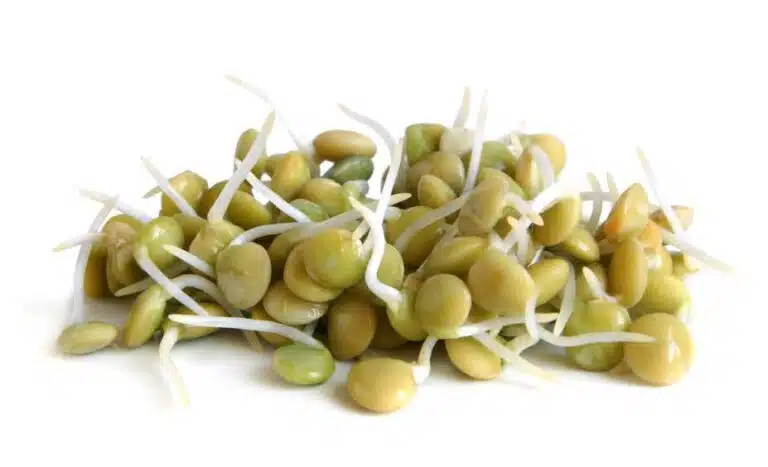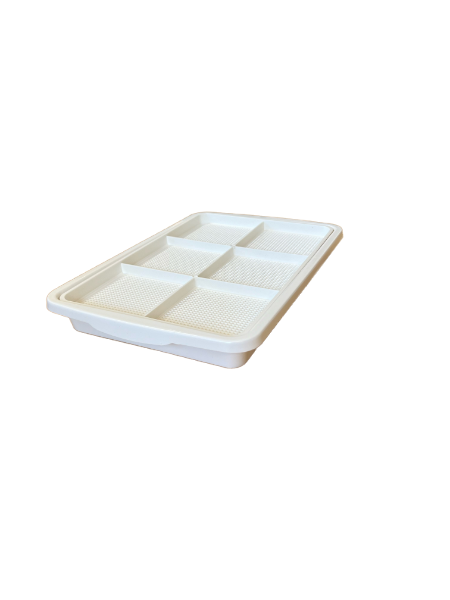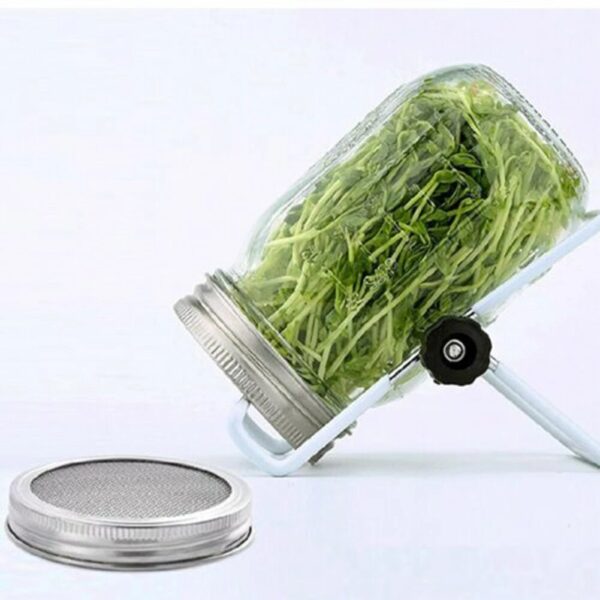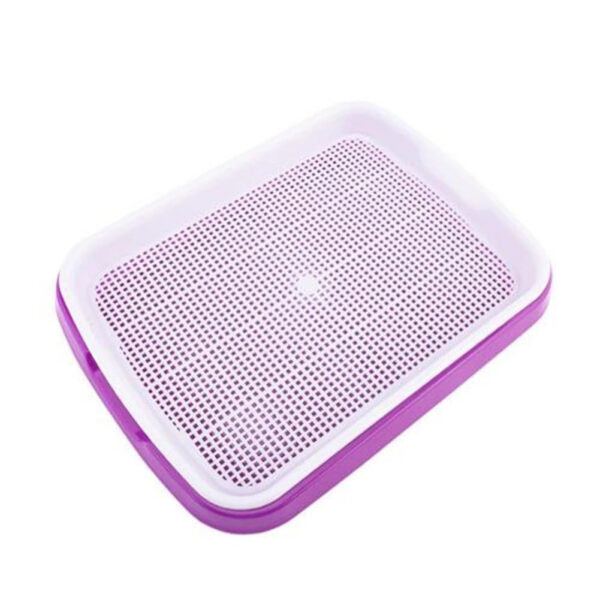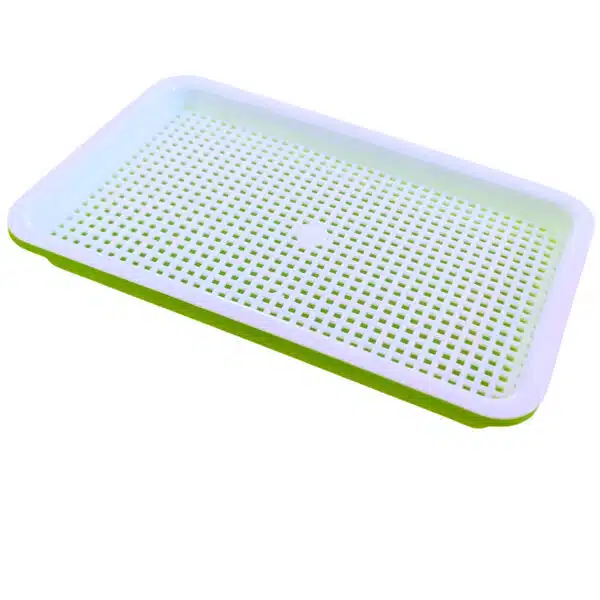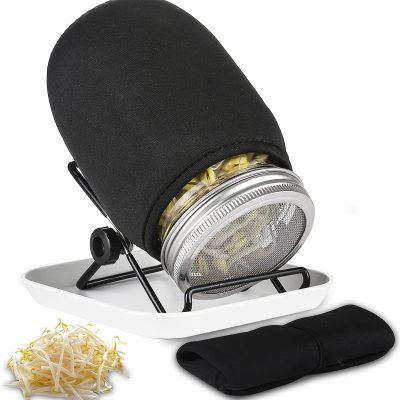Bean sprouts are a great addition to your food. They are packed with nutrients and make a great topping for salads and other dishes.
Growing your own sprouts is also easy and only requires a sprout hill or one seedling glass and a few beans.
It's important to research which bean seeds are safe to eat before you start growing sprouts to avoid poisoning.
Table of contents
ToggleBenefits of eating bean sprouts
Bean sprouts are an ideal food for those who want a healthy lifestyle, as they are nutritious and low in calories. Rich in essential vitamins such as B vitamins and vitamin C, as well as minerals such as iron and zinc, they support the body's functions effectively. Their high protein and fiber content also makes them excellent for digestion and weight control.
They are also rich in the antioxidant, lutein, which can help protect the eyes from damage.
Not only are these sprouts good for digestion due to their high fibre content, but they are also packed with antioxidants that protect the body from free radicals. Research even indicates that bean sprouts may promote heart health, thanks to their fibre and antioxidant content.
This makes bean sprouts a valuable part of a nutritional diet programme.
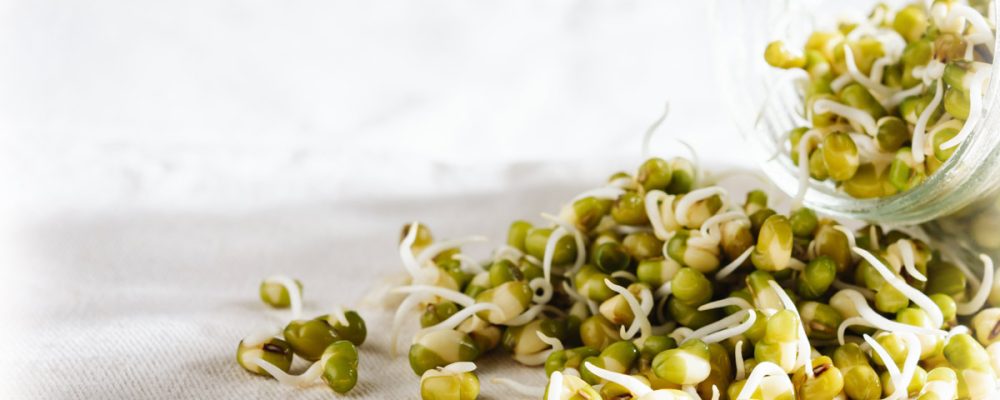
The main points - Guide to growing bean sprouts
Bean sprouts are not only a delicious and crunchy addition to your meals, but they are also a powerful source of essential nutrients. Below you will find an overview of the article's content.
| Subject | Description |
|---|---|
| Benefits of bean sprouts | Bean sprouts are full of nutrients such as protein, vitamins, minerals and antioxidants. They are good for the eyes and can be used as a topping on salads and other dishes. |
| Safety during germination | It is important to choose beans that are intended for sprouting and to buy from certified dealers. Some beans contain natural toxins and are not suitable for sprouting. |
| How to grow bean sprouts | The article contains a step-by-step guide to growing bean sprouts, including preparing equipment, rinsing the beans, sprouting and storing the finished sprouts. |
| Microgreens and sprouted seeds | The article answers frequently asked questions about microgreens and sprouting seeds, including the difference between microgreens and garden seeds, where to buy certified seeds, and how to grow microgreens. |
Use only organic sprouting seeds and beans intended for sprouting
The use of organic sprouted seeds and beans intended for germination is essential to ensure both safety and health. Overall, using organic sprouting seeds and beans ensures you get the healthiest, safest and most nutritious sprouts.
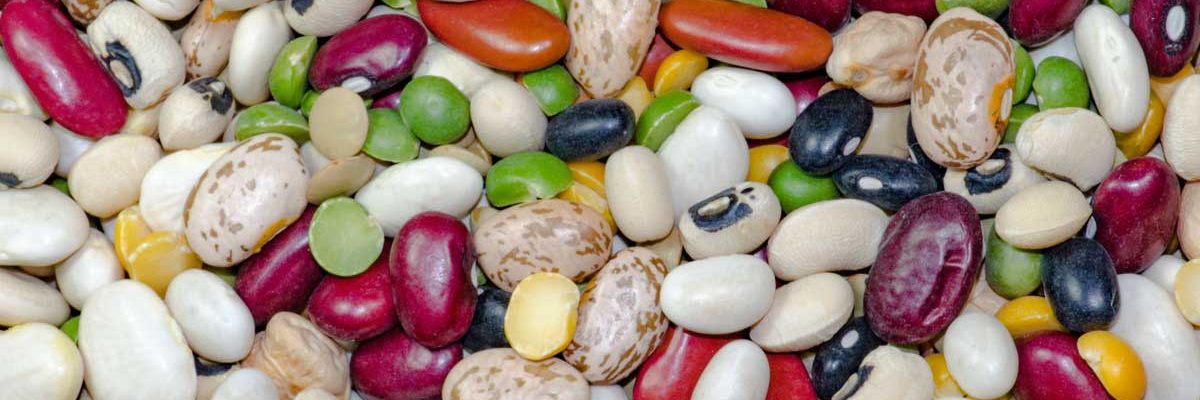
Mung beans and Azuki beans
There are many different types of bean sprouts you can grow, including alfalfa, peas, clover, lentils and alfalfa.
Each type has its own unique flavour and nutritional profile. It's important to choose seeds from a reliable source and make sure they are intended for germination, as not all beans are fit for purpose.
Before you start your first sprouts, make sure that the sprouts you want to make are edible and that the seeds are intended to germinate. For example, garden seeds from the supermarket or DIY store are not intended to germinate for eating as they are stained with various antibacterial chemical substances which are toxic to humans!
Only use organic and certified beans when making your sprouts, otherwise you risk ingesting harmful fungi, bacteria or other contaminants.
Only buy from stores that are certified by the National Board of Agriculture: Certified companies
Don't eat the wrong bean sprouts
With the growing interest in germinating seeds and beans at home on the kitchen counter.
Should come with a warning.
The wrong sprouts can contain natural toxins and poisons that can cause severe acute poisoning.
Beans with a high content of lectins cannot be used for seed germination!
The symptoms of lectin poisoning are; vomiting, diarrhoea and in severe cases stomach cramps and bleeding. The discomfort often comes within a few hours of ingesting the sprouts.
What is Lectin?
Lectin is one protein, there can bind to sugar. Lectins are found in plants, where they act as a defense system against animals that eat them1.
Lectin can also have important functions in humans, animals and microorganisms2.
Some lectins can be harmful to our digestion and nutrient absorption if not prepared properly1,3.
You should not sprout the following beans
- kidney beans, pinto beans, brown, black and white beans (Phaseolus vulgaris)
- broad beans (Phaseolus coccineus)
- lima beans (Phaseolus lunatus)
- helmet beans (Dolichos lablab)
- horse beans (Vivia faba)
- soybeans (Glycine max)
- yellow peas (Pisum sativum)
- chickpeas (Cicer arietinum)
- grass flat pod (Lathyrus sativus)
The following are good sprouting beans
- Red and green lentils (Lens culinaris)
- Mung beans (Phaseolus radiatus/Vigna radiata) – A good beginner's bean
- Azuki bean (Phaseolus angularis)
- Black-eyed beans (Vigna unguiculata)
- Bean (Phaseolus mungo)
- Peas (Pisum sativum)
* Source: Food with unwanted chemistry
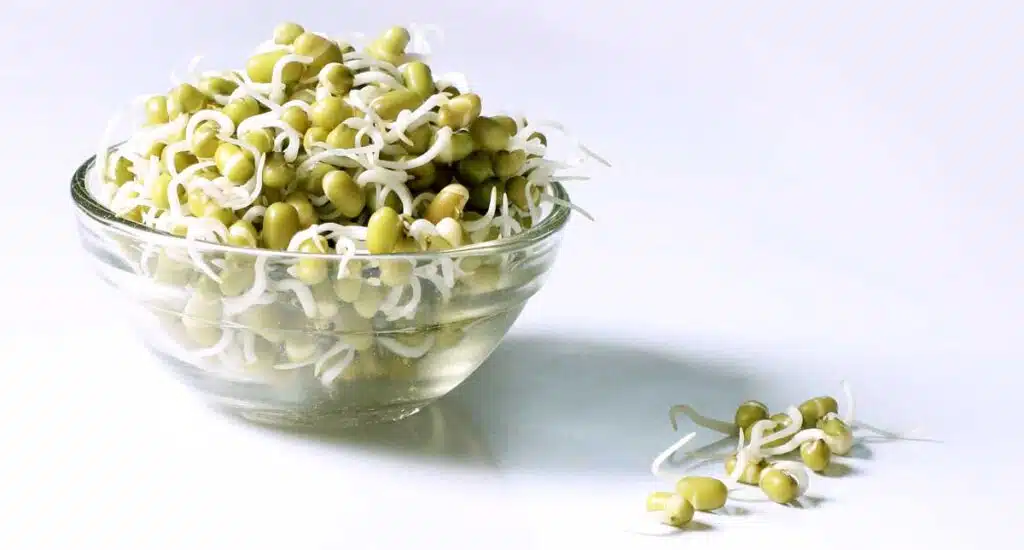
The sprout jar and sprout tray are essential tools you can use at home to grow fresh sprouts. They are both easy to clean and reuse, making them ideal for both beginner and experienced growers.
-
Germination tray for Microgreens with 6 compartments
- kr. 47,00
- Add to basket
Item no.: 28169 -
1L Sprout jar with lid and metal net for sprout cultivation
- kr. 295,00
- Add to basket
Item no.: 28102 -
Sprouting tray for growing microgreens purple/white
- kr. 45,95
- Add to basket
Item no.: 28096 -
Small sprouting tray set for growing microgreens Green/white 22.7×14.5×2.5cm
- kr. 27,00
- Add to basket
Item no.: 28094
How to make your own bean sprouts
To make bean sprouts, you need some kind of container where you can store the beans until they have sprouted and developed enough to eat.
Most people choose to use a sprouting tray, or sprouting glass to make their bean sprouts.
Sprout glass are to be preferred, as they can withstand boiling water, and they are available with stainless steel mesh lids, which make it super easy to grow your sprouts.
Use clean equipment for your germination
Before you start growing your bean sprouts, make sure all equipment is clean and free of bacteria. The easiest way to do this is to wash it thoroughly in soap and water.
The germination equipment should then be rinsed with boiling water to ensure that all pathogenic viruses and bacteria have been removed.
You should also wash your hands thoroughly before you start, so that you do not transfer harmful bacteria to the sprouting equipment.
If the equipment is not completely clean, you risk getting sick with Salmonella or E. coli bacteria, it is important to remember that the germination process is critical as germination takes place in a humid environment and at a high temperature where most bacteria thrive and can grow rapidly.
Rinse the beans thoroughly
The first point is to rinse the beans thoroughly, so that all dirt and bacteria are removed as best as possible. Rinse the seeds thoroughly under cold, clean water, preferably several times, before germinating them.
Step by step instructions
Growing bean sprouts is an easy and simple process.
Here is a step-by-step guide to making your own bean sprouts:
- Rinse the beans thoroughly in water and drain.
- Place the beans in a large glass container or sprouting tray.
- Fill the container or tray with water so that it covers the beans by approx. 4 cm.
- Let the beans soak for 8-12 hours at room temperature until they are swollen
- Drain the water from your bean sprouts and rinse them again.
- Repeat the rinsing process morning and evening for 3-5 days or until the sprouts are the desired length.
- Remember to place the sprouting glass so that excess water can drain off
- If you want the beans to be completely white, they should be kept completely dark during the process (cover them with a cloth)
- When the sprouts are ready, you can take them out of the sprouting jar and rinse them again in clean water.
- They should be eaten while they are completely fresh, otherwise you can store them in the fridge for 2-4 days.
Bean sprouts can be used in salads, sandwiches or as a topping on a hot dish. They are a healthy and nutritious source of protein, fiber and vitamins.
Recipe with bean sprouts
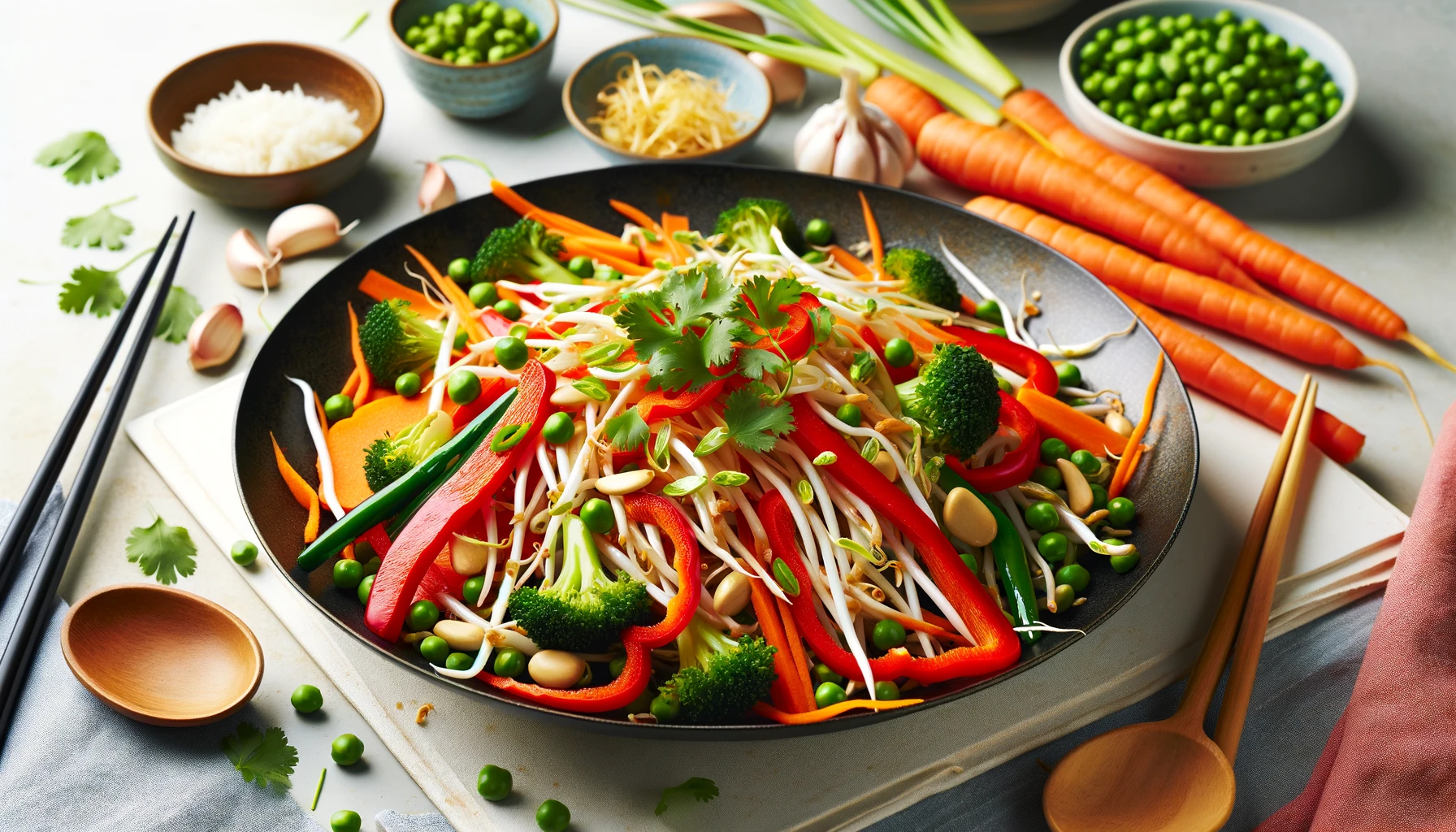
Bean Sprouts Stir-Fry
Ingredients:
- 2 cups fresh bean sprouts
- 1 red pepper, cut into strips
- 1 carrot, thinly sliced
- 2 spring onions, finely chopped
- 2 cloves garlic, minced
- 1 tbsp. fresh ginger, chopped
- 2 tbsp. soy sauce
- 1 tbsp. sesame oil
- 1 tbsp. olive oil
- Salt and pepper to taste
- Fresh coriander leaves (optional)
Course of action:
Prepare the vegetables: Rinse the bean sprouts thoroughly and let them drain. Cut the pepper, carrot and spring onion into thin strips.
Saute garlic and ginger: Heat olive oil in a large pan or wok over medium heat. Add the garlic and ginger and sauté for a minute until fragrant.
Add the vegetables: Add sliced bell pepper and carrot to the pan. Saute for 3-4 minutes until the vegetables are almost tender.
Add the bean sprouts: Add the bean sprouts and spring onions to the pan. Sauté for another 2-3 minutes.
Season with soy sauce and sesame oil: Add soy sauce and sesame oil. Mix well and sauté for a minute. Season to taste with salt and pepper.
Serving: Remove the pan from the heat. Garnish with fresh coriander leaves, if desired. Serve immediately, possibly with a side of cooked rice or noodles.
This recipe is quick and easy to prepare and can easily be adapted to taste. Enjoy your healthy and tasty meal!
FAQ - Frequently asked questions
How long can bean sprouts last?
Bean sprouts can stay fresh for 2 days in the refrigerator. You can conveniently store them in the sprouting glass in the fridge, but remember to rinse them once a day to keep them fresh.
Why bean sprouts are healthy
Bean sprouts are good for your health as they are rich in vitamins C, K and folate, which is part of the B vitamin group. These vitamins are essential for strengthening the eyes, immune system, red blood cells, skin and DNA. In addition, bean sprouts are an excellent source of several B vitamins, which are necessary for your body to convert food into energy, as well as fiber, which is good for digestion.
How to prepare bean sprouts?
To prepare bean sprouts, start by rinsing them thoroughly in cold water to remove any impurities. If you want to eat them raw, they can be added directly to salads or used as a topping for extra crunch. For a hot preparation, flash-fry the bean sprouts for a few minutes in a pan with a little oil; this gives them a nice flavor and texture. You can also blanch them quickly in boiling water and then cool them down in cold water, which is ideal for Asian dishes or to soften them a bit. Remember to add the bean sprouts to your dishes just before serving to preserve their crispness and nutritional value. They are versatile and can easily be included in many different recipes.
Where can I buy certified seeds for microgreens?
You can find certified seeds for sprouts and microgreens at PlanteLys.dk, which is a certified importer and dealer of these seeds. We buy the seeds from EU-certified manufacturers in Europe.
The certification means that we comply The Danish Food Agency's requirements for organic foods. You can visit the Danish Food and Food Administration's website to see if a company is approved to import and supply sprouted seeds.
When you choose good sprouting seeds, they should have a pleasant smell and look healthy when you open the seed bag. The seed bag must also show the batch number for the seeds. In addition, the bag must state that the seeds are organic or conventional.
Can I use garden seeds to grow microgreens?
No, it is strongly advised against using garden seeds to make microgreens or sprouts. The garden seeds you can buy in the shops are often stained, these are substances that certain garden seed manufacturers treat the seeds with during the drying process. The purpose of pickling is to protect the seeds from bacteria and fungi during storage and in the early stages of the seed's growth in the soil.
Certified sprout seeds for indoor microgreens and sprout cultivation in your kitchen are never pickled. This is because the stain is toxic to humans. Pickled garden seeds can grow fine in your sprouting tray, but if you eat sprouts from pickled seeds, you may experience stomach problems and diarrhea. If you have ingested sprouts from pickled garden seeds and experience stomach problems, you should seek immediate medical attention.
It is therefore important to avoid the use of stained seeds for sprouting. The safe solution is to use certified, organic sprout seeds for your sprouts and microgreens. That way, you are always on the safe side in your choice of sprouting seeds.
How do you make microgreens?
Growing microgreens is easy, all you need is a sprouting tray, organic seeds and coconut mulch and you're good to go.
We have created a thorough guide for those who want to start growing microgreens at home on the kitchen table. Read the full article here:
Can you eat raw bean sprouts?
Yes, you can eat raw bean sprouts, but it's important to take some precautions. Raw bean sprouts are nutrient-rich, but they are grown in an environment that favours bacterial growth. By following these guidelines, you can enjoy the health benefits that come with it. Use seeds that have been rained for germination, rinse them thoroughly, store them in the fridge and use them quickly.


